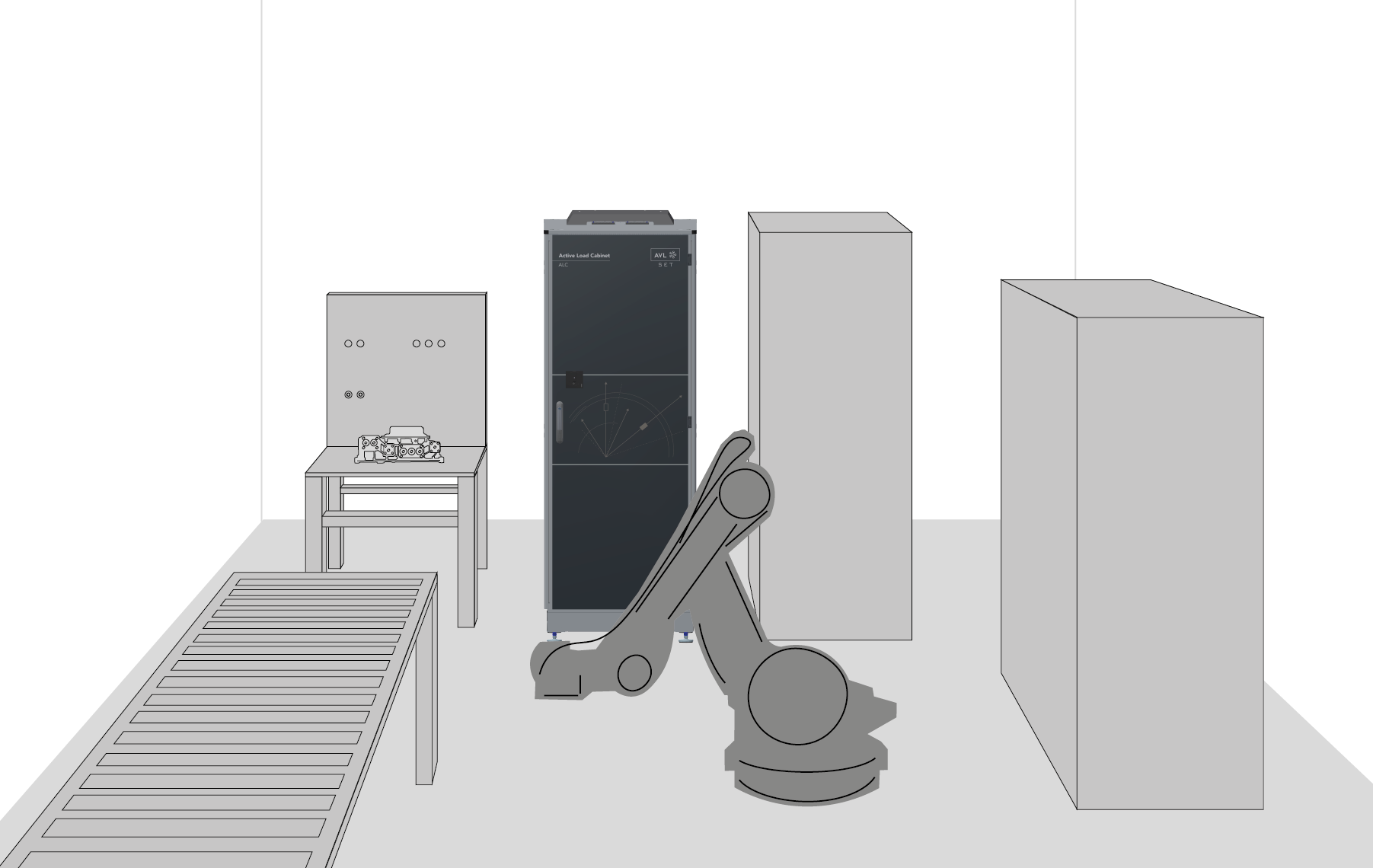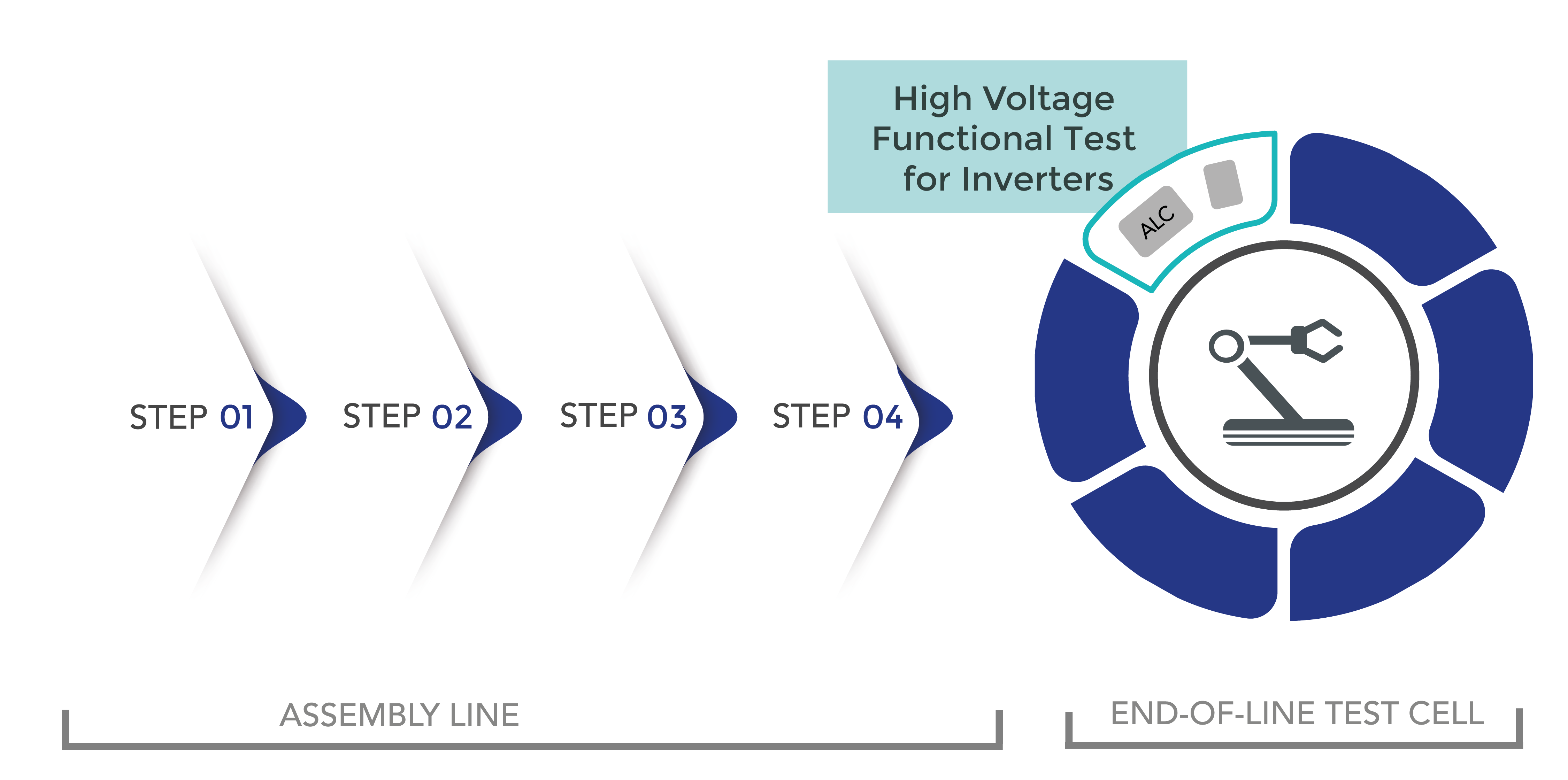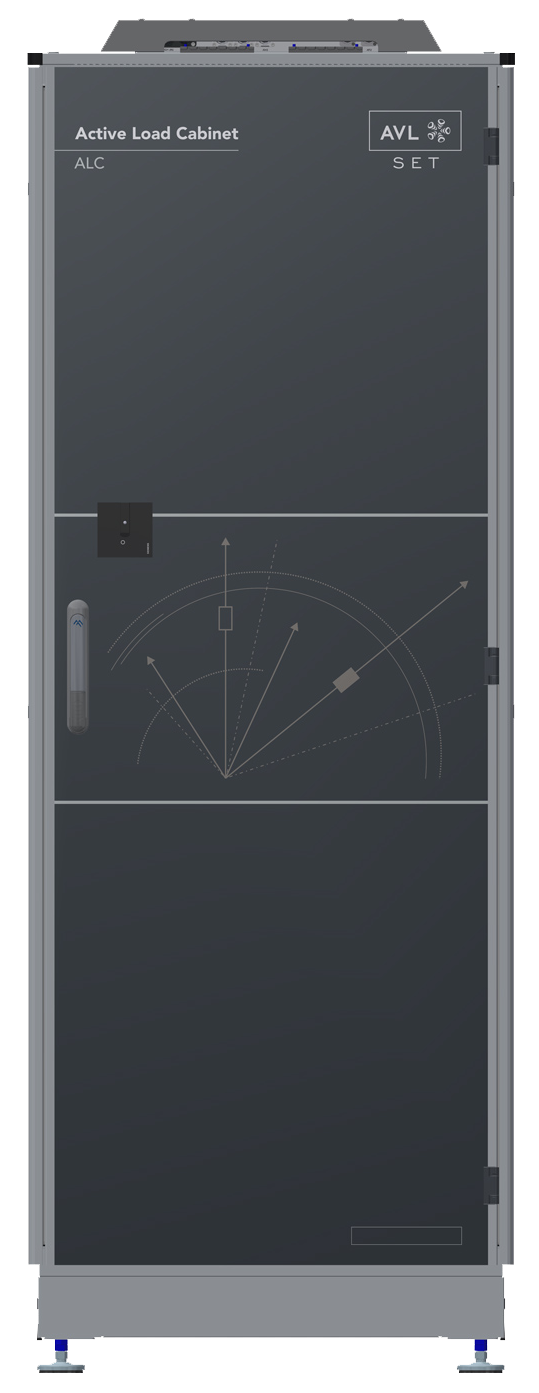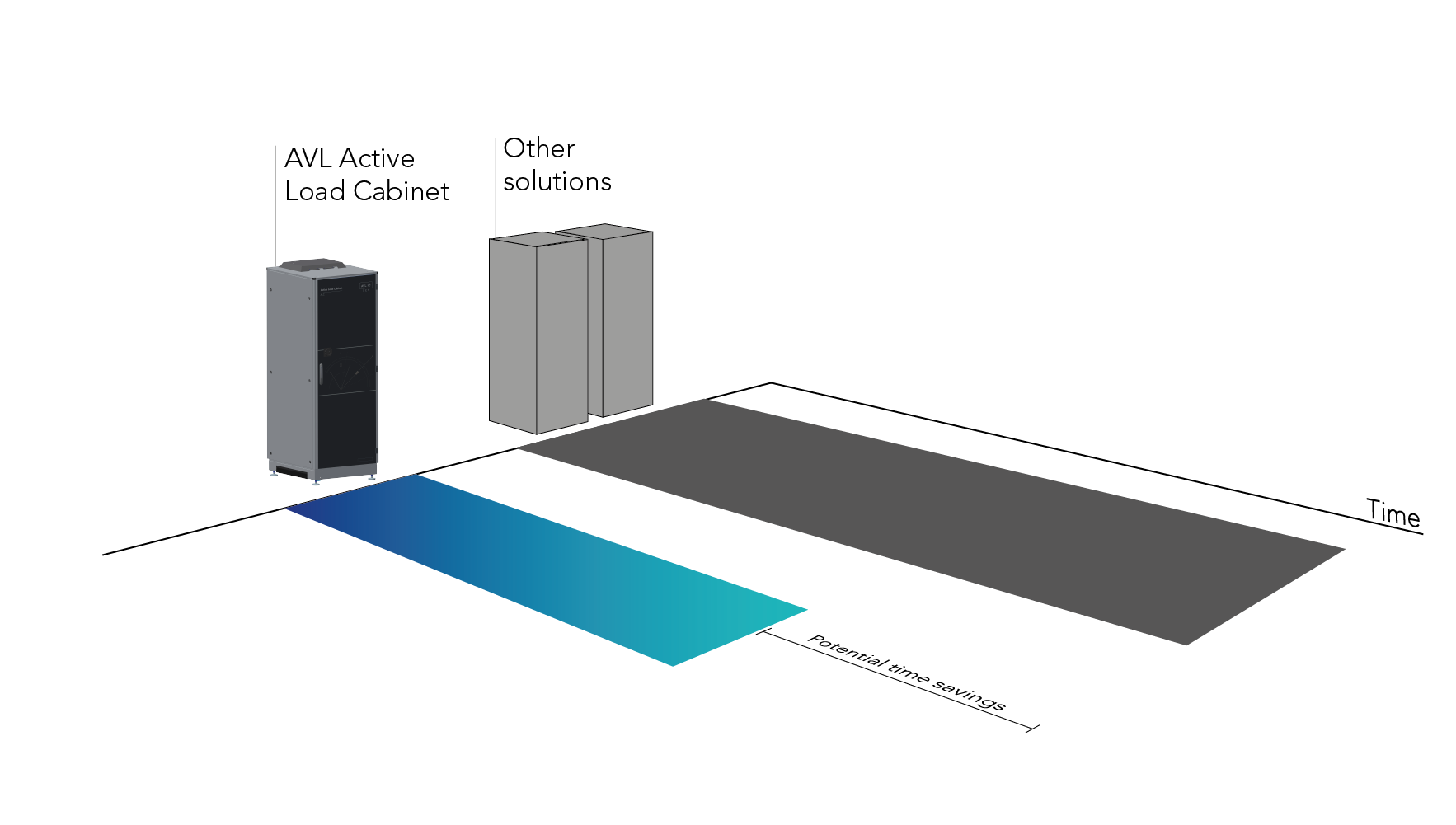AVL Active Load Cabinet™
for Inverter End-of-Line Testing
- Fast and UUT-independent testing – no need to collect the UUT-internal signals
- Highly accurate UUT calibration through precise calibration current
- The combination of calibration and high-power tests save test time and space
Discover the benefits…

Key product for high-voltage functional tests
The key component of an electrified powertrain is the inverter, which can therefore be found in every vehicle. The inverter is a power electronics-based mini-computer that converts DC current into a rotating multi-phase AC current and controls the torque of the e-motor.
The focus is on the production phase as part of the product development process, because more and more inverter developments are completed and begin production. End-of-Line testing is essential to ensure fault-free production and functional inverters.
End-of-Line testers for HV functional tests are used to verify the correct quality and functionality of the manufactured inverters. The aim is to release only functioning inverters to the market. A production environment has special requirements regarding the test equipment.

Download the ALC Solution Sheet
Key product for high-voltage functional tests
The inverter passes through a customer defined test content in an
End-of-Line test cell.
The following test challenges must be faced for high-voltage functional tests in the End-of-Line segment:
Testing Complexity
Optimized test sequences for one inverter
Parallelization of tests
Avoiding setup times
End-of-Line Complexity
Low cycle times
High reliability
Easy maintenance
Minimized footprint
Very cost-sensitive

Flexibility
Various production lines and cycle times
UUT specific operating points
Adjustable parameters
The AVL Active Load Cabinet (ALC) is an active load which can be used as a key product to perform high-voltage (HV) functional tests of inverters (unit under test, UUT) in the End-of-Line area. Additional equipment is required to perform the high-voltage functional test, which is not scope of the Actice Load Cabinet. The ALC has standardized interfaces for an easy integration into an End-of-Line test cell.

Our benefits
Fast and UUT-independent testing – no need to collect the UUT-internal signals
The design of the Active Load Cabinet is based on a unique control concept. Thanks to this fact, the ALC does not require the UUT-internal gate signals to synchronize on the UUT. Therefore, downtimes can be avoided as well as fast and independent testing of the UUT is ensured.
Highly accurate UUT calibration through precise calibration current
To calibrate the UUT-internal current sensors, the Active Load Cabinet offers the calibration mode. Within this mode the ALC acts as a variable current source. By integration of additional measurement equipment this modes can be used to calibrate the UUT internal sensors. Thanks to the ALC control concept the input current to the UUT can be adjusted fast and easy.
The combination of calibration and high-power tests save test time and space
The ALC is a one-cabinet solution for active-power tests and calibration as it combines two operation modes (R-L and calibration mode). This not only saves floor space, but also eliminates the necessity to move the UUT to a further testing station and therefore saving potential testing time.

To ensure the correct functionality of the produced inverters, a customer-defined test content is performed at the end of the production line. An End-of-Line test cell consists of a wide variety of tests. Our core competence here is a key product to perform End-of-Line high-voltage functional tests for inverters.
Save Test Time and Space
The ALC is a one-cabinet solution for high-voltage functional tests and calibration as it combines two operation modes:
- the R-L mode (R = resistance, L = inductance), and
- the calibration mode
This not only saves floor space, but also eliminates the necessity to move the UUT to a further testing station and therefore leads to potential testing time savings.

R-L Mode
- Emulation of an R-L Load
- Loads the inverter with active and reactive power on the AC-side
- Testing of the UUT´s power electronics under more realistic conditions
- Mode can be used for high-voltage functional tests
Calibration Mode
- The ALC acts as a variable current source
- The current source can be used to calibrate the UUT internal current sensors
- Measurement deviations must be determined by the higher-level control system
